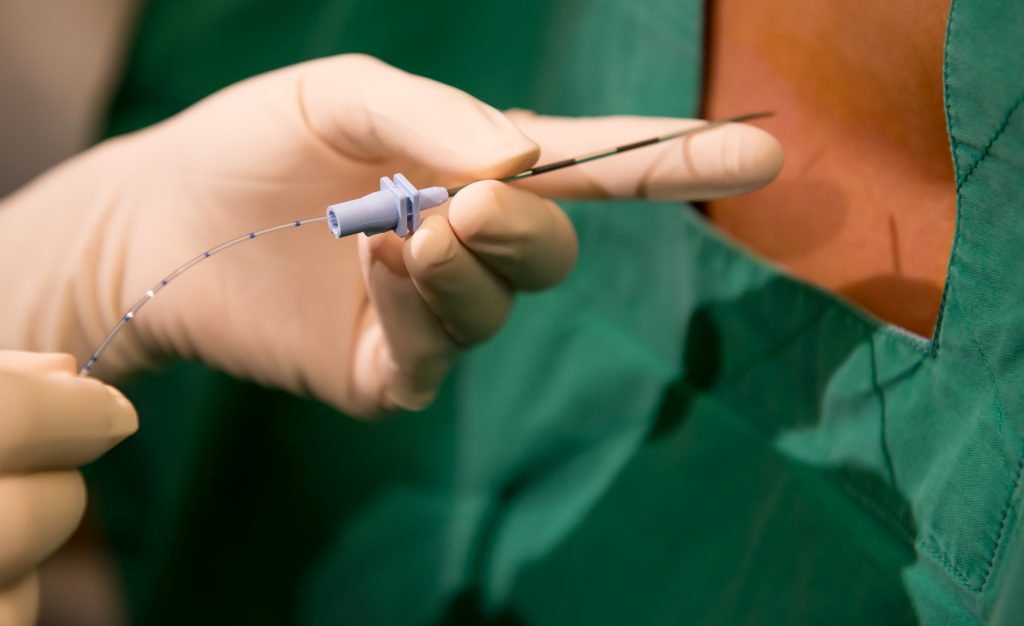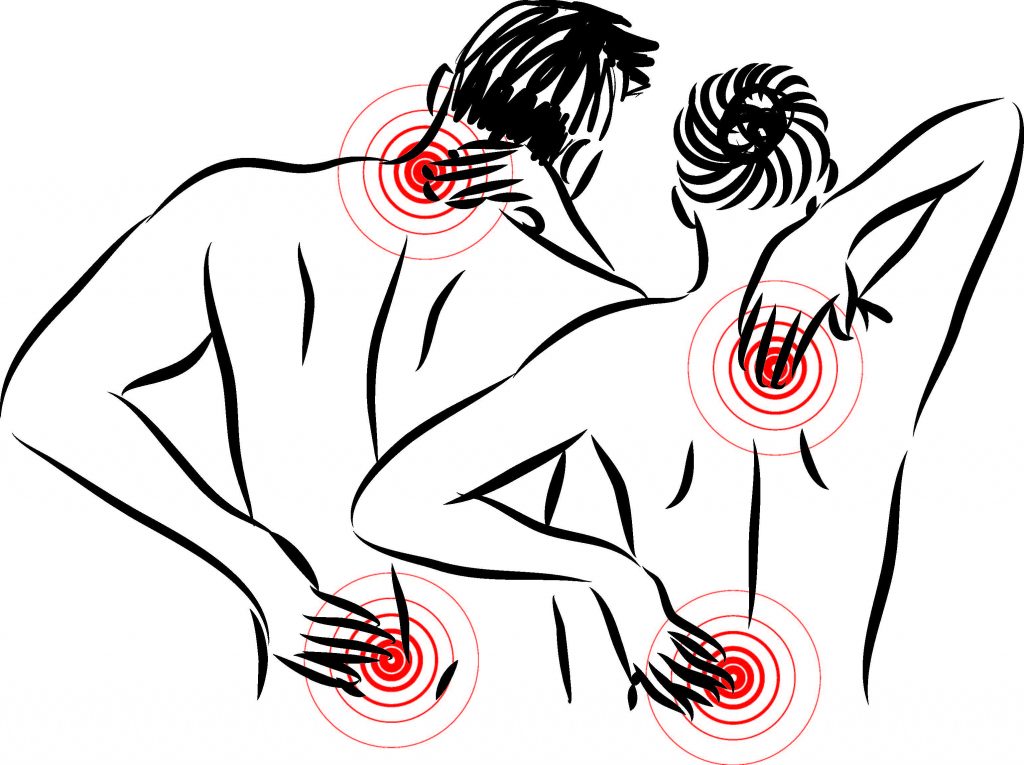
Oct 7, 2021
Paingone
Link Between Epidural Injections and Long-Term Pain Explored in Recent Studies
Studies out of Stanford University have been following women receiving epidural injections to control pain during childbirth. Epidural injections may include anesthetics such as bupivacaine or lidocaine, or any of a variety of corticosteroids.
The studies revealed that women who use epidurals during labor are at risk of developing chronic back pain or long-term, severe headaches if the epidural needle punctures the dura that lines the spinal cord. This is often referred to as a “wet tap” and causes spinal fluid to leak, causing severe pain and neurological problems. While relatively rare, wet taps do happen with even the most experienced physicians performing them.
“I’ve likely performed more than 10,000 epidurals in my lifetime, and I still have wet taps from time to time,” “But no matter how many we’ve seen, we still feel terrible about each one. We’re trying to relieve people’s pain and give them a wonderful childbirth experience, and the last thing we want to do is cause them complications,” said Pamela Flood, MD, professor of anesthesiology, Stanford University School of Medicine, in an interview with Anesthesiology News.
According to a study in the journal Anaesthesia, over half the women who had a Dural puncture continued to suffer from severe, migraine-like headaches eighteen months after their epidural. Nearly half suffered from lingering, recurring low back pain.
A higher risk of chronic pain was also reported in patients who suffered from Dural lining puncture when receiving steroid injections for low back pain. It is important to note that, although pain specialists give nearly nine million epidural steroid injections every year, the procedure is not approved by the FDA. The FDA warns that injecting steroids into the epidural area may cause rare but serious neurological complications, including stroke, paralysis, arachnoiditis (chronic, painful spinal cord inflammation), or vision problems, including blindness.
Studies Reveal Possible Link Between Repeated Steroid Injections for Pain and RDHD
Rapidly Destructive Hip Disease (RDHD) has been linked to repeated use of corticosteroid injections in the hip for osteoarthritis, according to a recent study published by The Journal of Bone & Joint Surgery. Kaiser Moanalua Medical Center in Hawaii’s researchers tracked health data for 700 patients receiving multiple steroid injections in the hip area. Those receiving high or repeated doses were 8.5 times as likely as those not receiving injections to develop RDHD. Those with RDHD experience reduced blood flow and, eventually, tissue death in the hip bone.
Patients who received either high-dose injections or multiple injections over time were more at risk. Patients receiving the specific steroid Triamcinolone were most likely to develop RDHD.
Lead researcher and author Dr. Kanu Okike of Hawaii Permanente Medical Group, Honolulu, explained, “While the risk of RDHD following a single low-dose (40 mg or less) triamcinolone injection is low, the risk is higher following high-dose (80 mg or more) injection and multiple injections. These findings provide information that can be used to counsel patients about the risks associated with this common procedure. In addition, caution should be taken with intra-articular hip injections utilizing 80 mg of corticosteroid and multiple injections,” wrote lead author Kanu Okike, MD, of Hawaii Permanente Medical Group in Honolulu.
In response to the study results, orthopedic surgeons at the Hawaii-based hospital started using fewer steroid injections into the hip joints of patients. Since then, RDHD cases in those same patients have declined. They have also added information about the possibility of RDHD due to the injections to their informed consent forms. High-dose injections are no longer being used at the facility.
The Gender Gap in Pain Response May be Tied to Memory
We don’t forget painful experiences. We learn from them. Don’t stick your hand in the fire, don’t slam your hand in a door, and other learning experiences are effective because we remember the pain and do our best not to repeat the circumstances. However, a recent study has shed light on how humans remember and respond when a painful situation is repeated in the same location. The results indicate that males find pain less tolerable when it happens again in the same place it’s happened before. Females don’t have this reduced pain tolerance for repeated occurrences.
The close ties between pain and memory have exciting repercussions for those suffering from chronic pain. According to neuroscientist Jeffrey Mogil of McGill University, “The idea that chronic pain is an issue of memory is increasingly gaining traction.”
In the first phase of the most recent study, the research team was originally trying to determine whether classical conditioning affected pain perception in rats. They would create pain in the animals in one room, then do the same again, but sometimes in the same room and sometimes in a different room. They discovered something unexpected: Males were more sensitive to pain the second day if they were in the same room they were in the first day. With females, there was no increase in sensitivity to pain; they could tolerate it better the second day, even in the same room.

In the next phase of the study, human males and females were subjected to pain from a constricting tourniquet. The men showed an increased response to pain the second day, but only if they were in the same room where they had felt the pain previously. If they were in a different room, their perception of the pain did not increase. Women rated their pain the same both days and in both locations.
Questions arising from the study include whether the response is tied to stress levels, testosterone, or other hormonal markers. More studies are needed because, explained Mogil, the findings “reinforce the fact that sex differences are important in pain, and females deserve to be studied,” he says. “The field has completely ignored the study of females for decades, and only now are people starting to switch.”
This Week’s Pain Fact: In the United States, over 60% of women receive an epidural or spinal anesthesia during childbirth. According to a CDC study in 2008 (the last large study on the topic), women under 20 years of age are more like to have an epidural than mothers over age 35. Women with a Ph.D. or Master’s degree are twice as likely to ask for and receive an epidural as women who didn’t graduate high school.
Is Paingone helping your patients and your practice?
Tell us your success story.
A robust retail strategy is essential to growing your practice.
You only have so many hours a week available for appointments. The fastest way to increase your bottom line is to incorporate profitable products that generate repeat business and build your reputation as a medical professional. That’s where Paingone comes in.
Contact us below to learn more about our products, wholesale pricing and how Paingone can benefit your practice.

